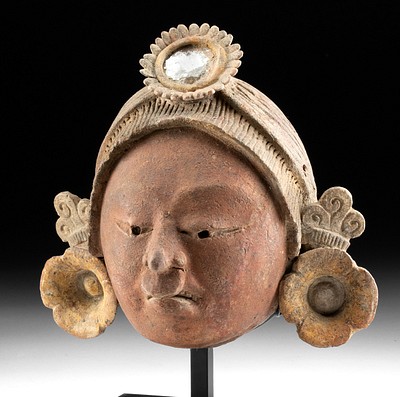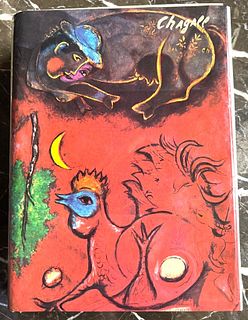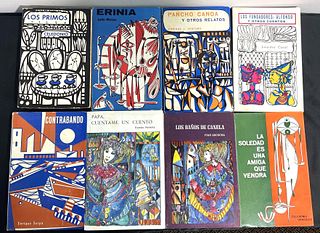Published John F. Collins "Hand Gun" Photo + Catalogue
Lot 188
About Seller
Artemis Gallery
686 S Taylor Ave, Ste 106
Louisville, CO 80027
United States
Selling antiquities, ancient and ethnographic art online since 1993, Artemis Gallery specializes in Classical Antiquities (Egyptian, Greek, Roman, Near Eastern), Asian, Pre-Columbian, African / Tribal / Oceanographic art. Our extensive inventory includes pottery, stone, metal, wood, glass and textil...Read more
Categories
Estimate:
$2,400 - $3,600
Absentee vs Live bid
Two ways to bid:
- Leave a max absentee bid and the platform will bid on your behalf up to your maximum bid during the live auction.
- Bid live during the auction and your bids will be submitted real-time to the auctioneer.
Bid Increments
| Price | Bid Increment |
|---|---|
| $0 | $25 |
| $300 | $50 |
| $1,000 | $100 |
| $2,000 | $250 |
| $5,000 | $500 |
| $10,000 | $1,000 |
| $20,000 | $2,500 |
| $50,000 | $5,000 |
| $100,000 | $10,000 |
| $200,000 | $20,000 |
About Auction
By Artemis Gallery
Jul 14, 2022
Set Reminder
2022-07-14 10:00:00
2022-07-14 10:00:00
America/New_York
Bidsquare
Bidsquare : Exceptional Antiquities Ethnographica Fine Art
https://www.bidsquare.com/auctions/artemis-gallery/exceptional-antiquities-ethnographica-fine-art-9692
Museum-worthy examples of classical antiquities (Egyptian, Greek, Roman, Near Eastern), Viking, Far East / Asian, Pre-Columbian, African / Tribal, Oceanic, Native American, Spanish Colonial, Fossils, Ancient Jewelry, Fine / Visual Arts, so much more! Artemis Gallery info@artemisgallery.com
Museum-worthy examples of classical antiquities (Egyptian, Greek, Roman, Near Eastern), Viking, Far East / Asian, Pre-Columbian, African / Tribal, Oceanic, Native American, Spanish Colonial, Fossils, Ancient Jewelry, Fine / Visual Arts, so much more! Artemis Gallery info@artemisgallery.com
- Lot Description
John F. Collins (American, 1888-1990). "Hand Gun" gelatin silver print photograph, ca. 1936. An undeniably powerful photograph of a hand gun by John F. Collins, an American photographer who employed avant-garde techniques in his photographs of unexpected subjects that were not typically the focus of art photography during his day. The composition of this photo is deceptively simple - a human hand firmly holds a gun, pulling back the trigger - however the true subject is Collins' modern vision replete with abstract shapes, dramatic light and dark contrasts, interesting tones and textures. Collins was part of the first generation of 20th century American photographers - along with Edward Steichen, Charles Sheeler, and others - who employed avant-garde ideas into their commercial work and saw no distinction between fine and applied photography, much like the Bauhaus and Constructivist photographers in Europe. Size of photo: 19.75" L x 16" W (50.2 cm x 40.6 cm) Size of matte: approximately 28" L x 22" W (71.1 cm x 55.9 cm)
This photograph is also accompanied by a copy of Photofind Gallery's catalogue entitled "John F. Collins Photographs 1904-1946" (1987) which provides beautiful illustrations and informative text. In fact, "Hand Gun" is published in the catalogue (see photos). The following passage from the catalogue captures the power and style of Collins' photography, "Collins's work was usually simple, elegant, refined in conception and highly dramatic. The pictures emphasized Cubist flattened space, overlapping planes of light, vigorous and subtle tones and textures, to accentuate boldly the forms of the objects, which were treated as abstract shapes. Collins's powerful graphic images called attention to the uniqueness of each object, emphasizing 'the thing itself.' This was the core and heart of avant-garde photography of the 1920s." ("John F. Collins Photographs 1904-1946" Photofind Gallery Inc. 1987)
The photograph was in the collection of pioneering patron of the arts, Ginny Williams. Sotheby's hosted a series of auctions featuring art and photography in the Ginny Williams Collection in June and July of 2020. Their press release began as follows, "Born in rural Virginia in 1927, Ginny moved to Denver, Colorado in the late 1950s with her husband, Carl Williams. An avid photographer herself, who studied with Austrian-American photojournalist and photographer Ernst Haas, her collecting journey began with classical figurative photography. Her passion and keen eye eventually prompted her to open her namesake gallery in Denver in the 1980s. While her passion for photography never waned, remaining a primary focus of both her gallery and private collection, her voracious curiosity quickly widened her curatorial focus. Over time, Ginny became increasingly courageous and experimental in her selections, venturing into Abstract Expressionism and Contemporary Art and following her artists themselves through gallery shows and museum exhibitions. As the years passed, Ginny became as much of a trailblazer as the artists she collected."
Provenance: private Idledale, Colorado, USA collection; ex-Ginny Williams collection of Denver, Colorado
All items legal to buy/sell under U.S. Statute covering cultural patrimony Code 2600, CHAPTER 14, and are guaranteed to be as described or your money back.
A Certificate of Authenticity will accompany all winning bids.
PLEASE NOTE: Due to recent increases of shipments being seized by Australian & German customs (even for items with pre-UNESCO provenance), we will no longer ship most antiquities and ancient Chinese art to Australia & Germany. For categories of items that are acceptable to ship to Australia or Germany, please contact us directly or work with your local customs brokerage firm.
Display stands not described as included/custom in the item description are for photography purposes only and will not be included with the item upon shipping.
#171271Photograph is in very good condition. On the verso of the matte is a Ginny Williams Collection label identifying the photograph as well as handwritten notes as shown. The catalogue shows minor age wear but is otherwise very nice, providing wonderful contextual images and text.Condition
- Shipping Info
-
All shipping is handled in-house for your convenience. Your invoice from Artemis Gallery will include shipping calculation instructions. If in doubt, please inquire BEFORE bidding for estimated shipping costs for individual items.
-
- Buyer's Premium



 EUR
EUR CAD
CAD AUD
AUD GBP
GBP MXN
MXN HKD
HKD CNY
CNY MYR
MYR SEK
SEK SGD
SGD CHF
CHF THB
THB

















